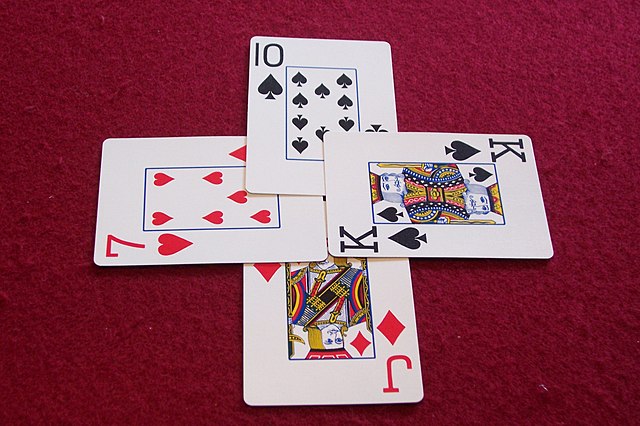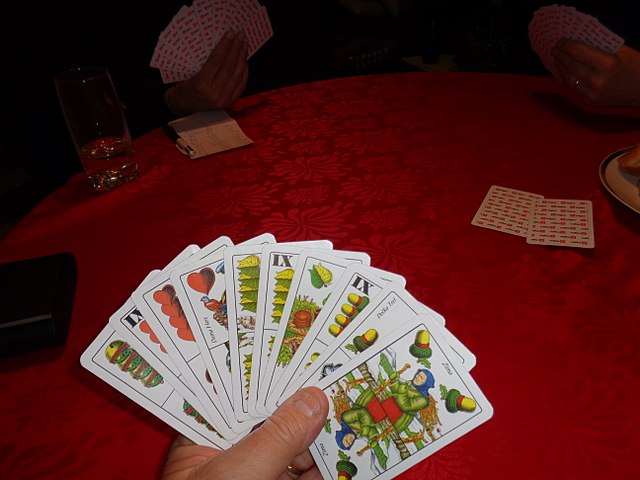Black lady is an American card game of the hearts group for three to six players and the most popular of the group. It emerged in the early 20th century as an elaboration of hearts and was initially also called discard hearts. It is named after its highest penalty card, the queen of spades or "black lady". It is a trick-avoidance game in which the aim is to avoid taking tricks containing hearts or the black lady. American author and leading bridge exponent, Ely Culbertson, describes it as "essentially hearts with the addition of the queen of spades as a minus card, counting thirteen" and goes on to say that "black lady and its elaborations have completely overshadowed the original hearts in popularity".
The black lady
The penalty cards in black lady
An example trick. South has led J♦ and takes this trick (which includes a 1-point penalty heart). In this case, no other player had any diamonds.
A card game is any game that uses playing cards as the primary device with which the game is played, whether the cards are of a traditional design or specifically created for the game (proprietary). Countless card games exist, including families of related games. A small number of card games played with traditional decks have formally standardized rules with international tournaments being held, but most are folk games whose rules may vary by region, culture, location or from circle to circle.
The Card Players, 17th-century painting by Theodoor Rombouts
Preferans, a trick-taking card game version popular in Croatia
The Card Players, 1895 by Paul Cézanne
Historically, card games such as whist and contract bridge were opportunities for quiet socializing, as shown in this 1930s magic lantern slide photo taken in Seattle, Washington.







